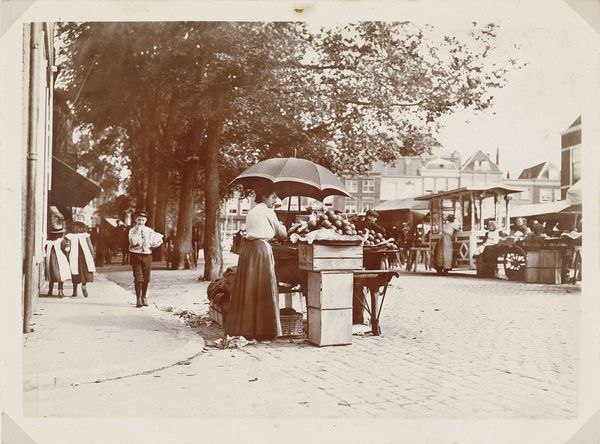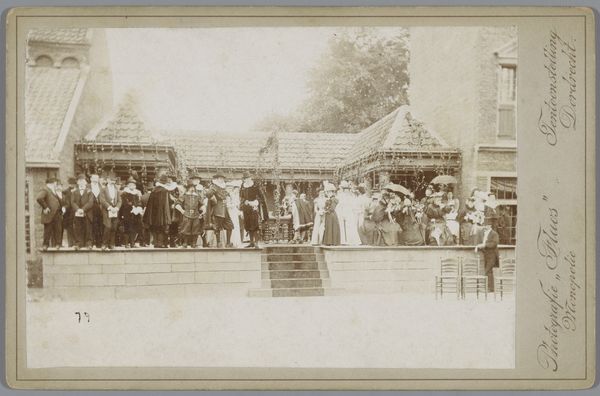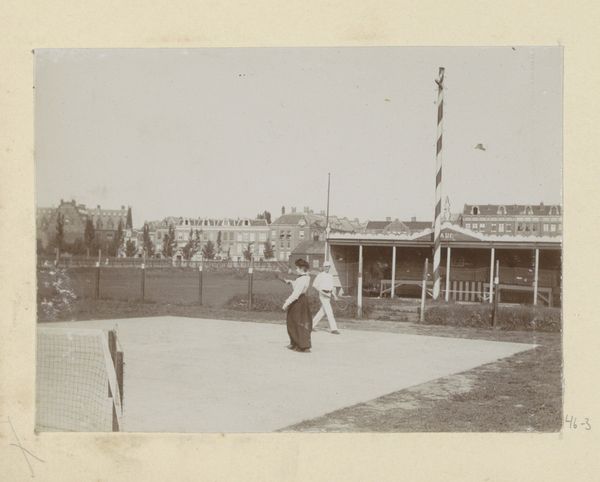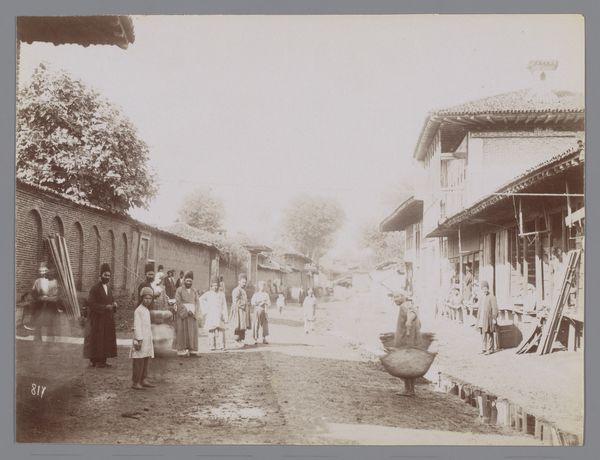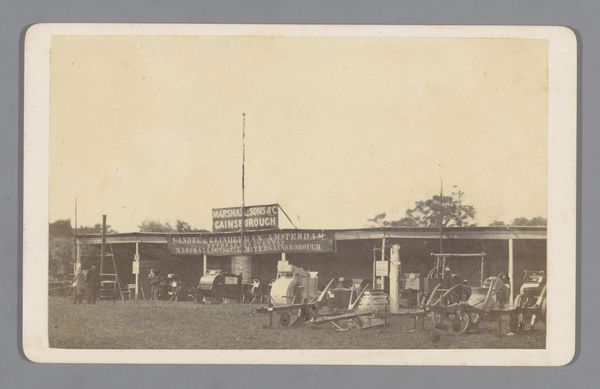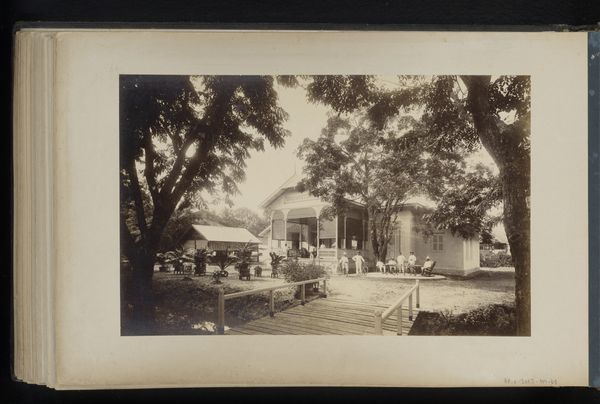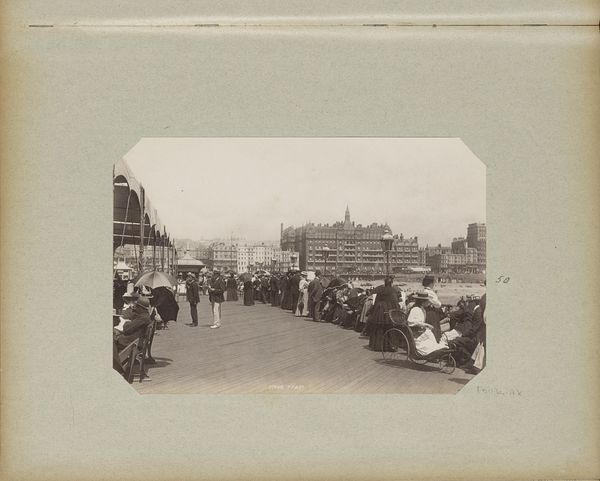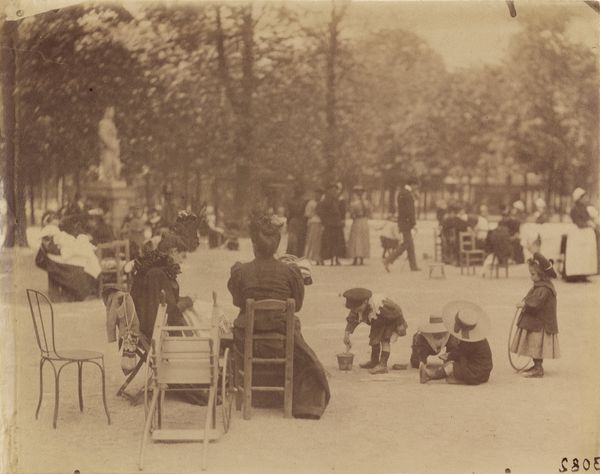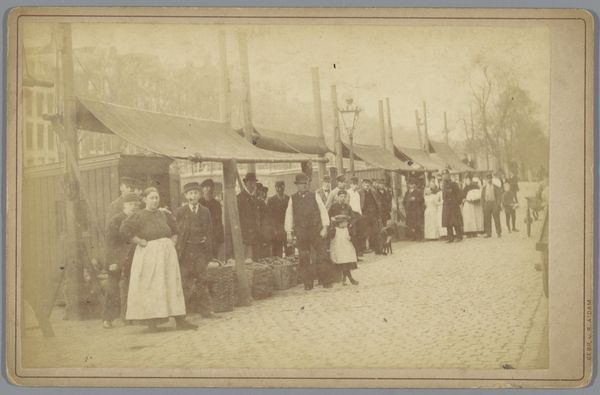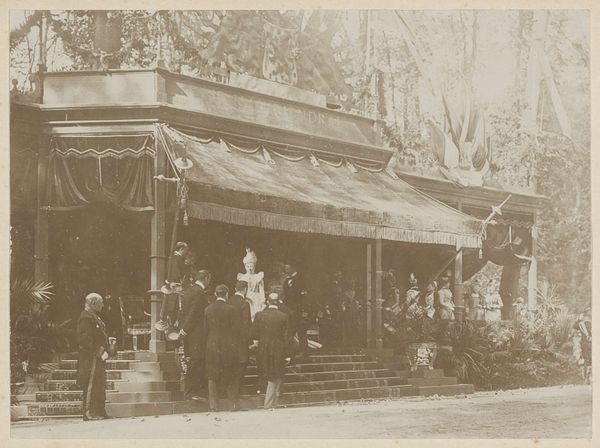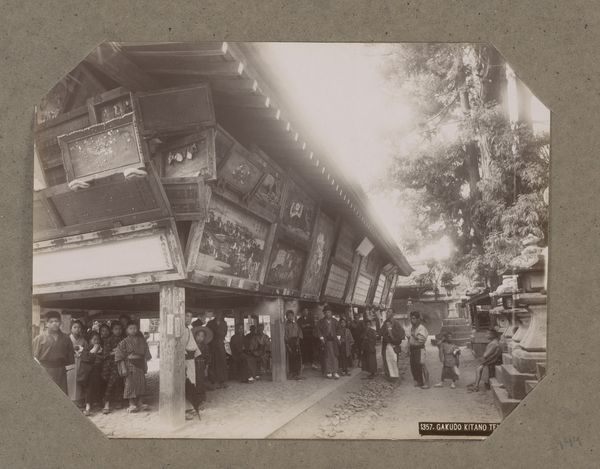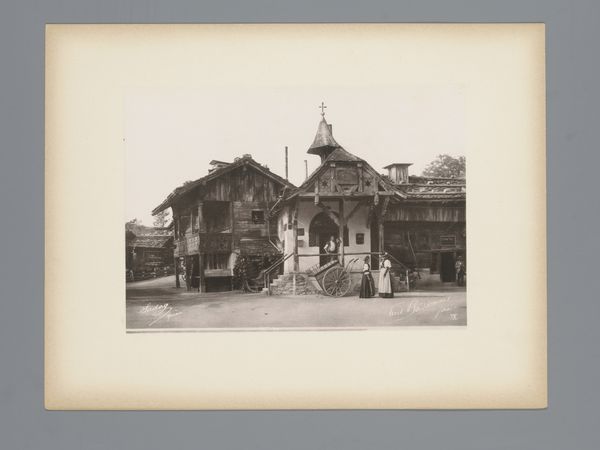
Dimensions: height 89 mm, width 120 mm
Copyright: Rijks Museum: Open Domain
Curator: Welcome. We're standing before "At the Beach," a gelatin silver print created by Willem de Jong, likely sometime between 1895 and 1920. Editor: My initial thought is how beautifully sepia-toned it is, lending such a nostalgic air. It really captures a moment frozen in time. Curator: Absolutely. De Jong’s work frequently depicted genre scenes and cityscapes. This photo is significant as it gives us a window into leisure and social life at the turn of the century. Observe how class distinctions play out, with folks carefully arrayed, almost performing for the camera. Editor: And the material details – look at the ornate facades of the beachside shops, the textures of the clothing, even the visible brushstrokes which simulate painting, something that the Pictorialists heavily promoted at this time in art photography! The very act of going to the beach becomes a display of status and a performance of leisure. Curator: Exactly. Pictorialism strived to elevate photography to fine art by imitating painting. The soft focus, careful composition, and manipulation of the print— likely through hand-application of chemicals or paper texture—mimic impressionist paintings and drawings. It reflects an artistic aspiration to be more than mere documentation. Editor: Which then shifts the question to not just *what* we're seeing, but *how* it was made and the intention behind the image. A gelatin silver print, unlike other photographic methods of the time, enabled a wide range of tonal effects that De Jong exploits wonderfully here. Curator: Precisely. The controlled tones emphasize specific details within a public spectacle, drawing focus to particular subjects and social customs, telling us that going to the beach was very much a performance of leisure within a carefully crafted socio-economic structure. Editor: I leave now thinking about all the work it takes, the equipment, the resources for a family to get to the beach and take up their positions as participants and witnesses in this elaborate event. Curator: And consider how de Jong immortalizes these scenes—reflecting not just a pastime but also the social currents shaping Dutch society at the time.
Comments
rijksmuseum about 2 years ago
⋮
Taking photographs and recreation: these two pastimes just begged to be combined. A day at the beach was the perfect opportunity to pull out the camera and capture the experiences with friends and family for posterity. It was almost a cliché. Amateurs could find examples of beach photographs in manuals and magazines and learned, for instance, not to take shots with backlighting.
Join the conversation
Join millions of artists and users on Artera today and experience the ultimate creative platform.
